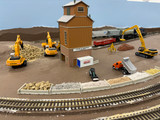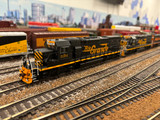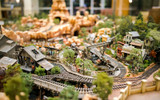Customizing and Kitbashing Models for Model Railroading: A Comprehensive Guide
Part 1: Introduction to Customization and Kitbashing in Model Railroading
1.1 Understanding Customization
Model railroading is not just about assembling pre-made kits; it's also about expressing creativity and individuality. Customization involves modifying or adding details to models to create unique and personalized railroad scenes.
1.2 What is Kitbashing?
Kitbashing is a modeling technique commonly used in various hobbies, including model railroading, to create unique and customized models. The term "kitbashing" is derived from the practice of taking parts from different model kits and combining them to construct a new and original model. This process allows modelers to go beyond the limitations of pre-packaged kits and express their creativity by building something entirely distinct.
Key aspects of kitbashing include:
- Customization: Kitbashing enables modelers to customize their models to a high degree. By combining elements from different kits or adding details to existing models, hobbyists can achieve a level of individuality not possible with off-the-shelf kits.
- Creativity: Kitbashing is a creative outlet that encourages modelers to envision and bring to life unique ideas. It involves thinking outside the box and seeing the potential for combining various components in unconventional ways.
- Resourcefulness: Kitbashing often involves repurposing parts from kits designed for different purposes. Modelers may use pieces from buildings, vehicles, or other structures to create something entirely new. This resourcefulness is a hallmark of the kitbashing process.
- Scale Modeling: While kitbashing is employed in various hobbies, it is particularly prevalent in scale modeling, including model railroading, where enthusiasts seek to replicate real-world scenes with accuracy and detail.
- Blurring Boundaries: Kitbashing blurs the boundaries between different model kits and genres. Modelers might combine elements from different manufacturers or even different scales to achieve a specific look or effect.
- Detail Enhancement: Modelers often use kitbashing to add finer details to their models. This can include incorporating aftermarket parts, scratch-built components, or modifications to improve realism and authenticity.
Kitbashing is a dynamic and rewarding aspect of the modeling hobby, allowing enthusiasts to push the boundaries of what is possible with standard kits and infuse their projects with a personal touch. It requires a combination of technical skill, creativity, and an understanding of the desired outcome, making it a fulfilling pursuit for many modelers.

2.1 Essential Tools
Before diving into customization and kitbashing, it's crucial to have the right tools. Discuss essential tools such as hobby knives, files, sandpaper, and precision measuring tools that are indispensable for the process.
2.2 Materials for Kitbashing
Kitbashing in model railroading requires a variety of materials to modify, enhance, and combine different model components. The specific materials you'll need can vary based on the scale of your model, the type of modifications you're making, and your personal preferences. Here's a list of common materials used in kitbashing for model railroading:
- Styrene Sheets: Styrene plastic sheets come in various thicknesses and sizes. They are versatile and can be easily cut, shaped, and glued to create new surfaces or modify existing structures.
- Plastic Tubing: Used for creating pipes, railings, or other cylindrical features. Plastic tubing comes in different diameters, and it can be cut to the desired length.
- Brass and Plastic Rods/Wire: Brass or plastic rods and wire are useful for creating fine details, handrails, or structural elements. They can be bent and shaped to achieve specific forms.
- Wood: Wood can be used for structural modifications or as a base for building custom structures. It's often used in combination with other materials to add strength and variety.
- Super Glue (Cyanoacrylate): A fast-bonding adhesive suitable for joining plastic, metal, and other materials. It's commonly used in model building due to its quick curing time.
- Plastic Cement: Specifically designed for bonding plastic parts, plastic cement creates strong, durable connections. It's useful for securing styrene components.
- Putty or Epoxy: Used for filling gaps, seams, or imperfections in your kitbashed model. Putty can be shaped and sanded after drying.
- Hobby Knives and Blades: Essential for precision cutting, trimming, and shaping of materials. A variety of blade shapes and sizes are available for different tasks.
- Files and Sandpaper: Files are useful for smoothing rough edges, and sandpaper is essential for refining surfaces and achieving a smooth finish on modified parts.
- Masking Tape: Used for temporarily holding parts together during assembly, as well as for masking off areas when painting.
- Spray Paints and Brushes: High-quality paints suitable for plastic models are essential for achieving a realistic finish. Airbrushes are often used for larger surfaces, while brushes can handle finer details.
- Decals and Transfers: Adding custom decals or transfers can enhance the realism of your kitbashed models. They come in various scales and themes.
- Aftermarket Detail Parts: Explore aftermarket parts such as photo-etched details, resin castings, or 3D-printed components that can be added to enhance the level of detail on your models.
- Magnifiers and Precision Tools: For working on small and intricate details, especially important in smaller scales.
Before starting a kitbashing project, it's advisable to plan and sketch your modifications to determine the materials you'll need. Having a well-equipped workspace with good lighting and ventilation is also crucial for a successful kitbashing experience.
Part 3: Planning Your Customization Project
Customizing models in the world of model railroading is not only an expression of creativity but also a strategic process that demands careful planning. Before you embark on your customization journey, it's essential to invest time in research, inspiration gathering, and detailed planning to ensure a successful and satisfying outcome.
3.1 Research and Inspiration
The foundation of any successful customization project lies in thorough research. Whether you're replicating a real-world scene or creating a fictional masterpiece, studying prototypes, historical photographs, and existing layouts can provide valuable insights. Pay attention to architectural details, color schemes, and the overall ambiance of the scenes you want to recreate. This research phase will guide your decisions throughout the customization process.
3.2 Sketching and Planning
Once you've gathered inspiration, it's time to translate your ideas into tangible plans. Sketching is a powerful tool in the planning phase, allowing you to visualize the modifications you intend to make. Consider the layout, placement of structures, and the overall flow of your railroad scene. Detailing each modification on paper helps you foresee challenges and refine your concepts before physically altering your models.
Tips for Sketching:
- Scale Representation: Ensure that your sketches accurately represent the scale of your model railroad. This helps in maintaining realism and proportionality in your customizations.
- Annotation: Add notes and annotations to your sketches. This can include specific measurements, colors, and details that might be easy to forget during the hands-on phase.
- Iteration: Don't hesitate to iterate on your sketches. Consider multiple design options, and refine your ideas based on feedback from fellow modelers or your own evolving vision.
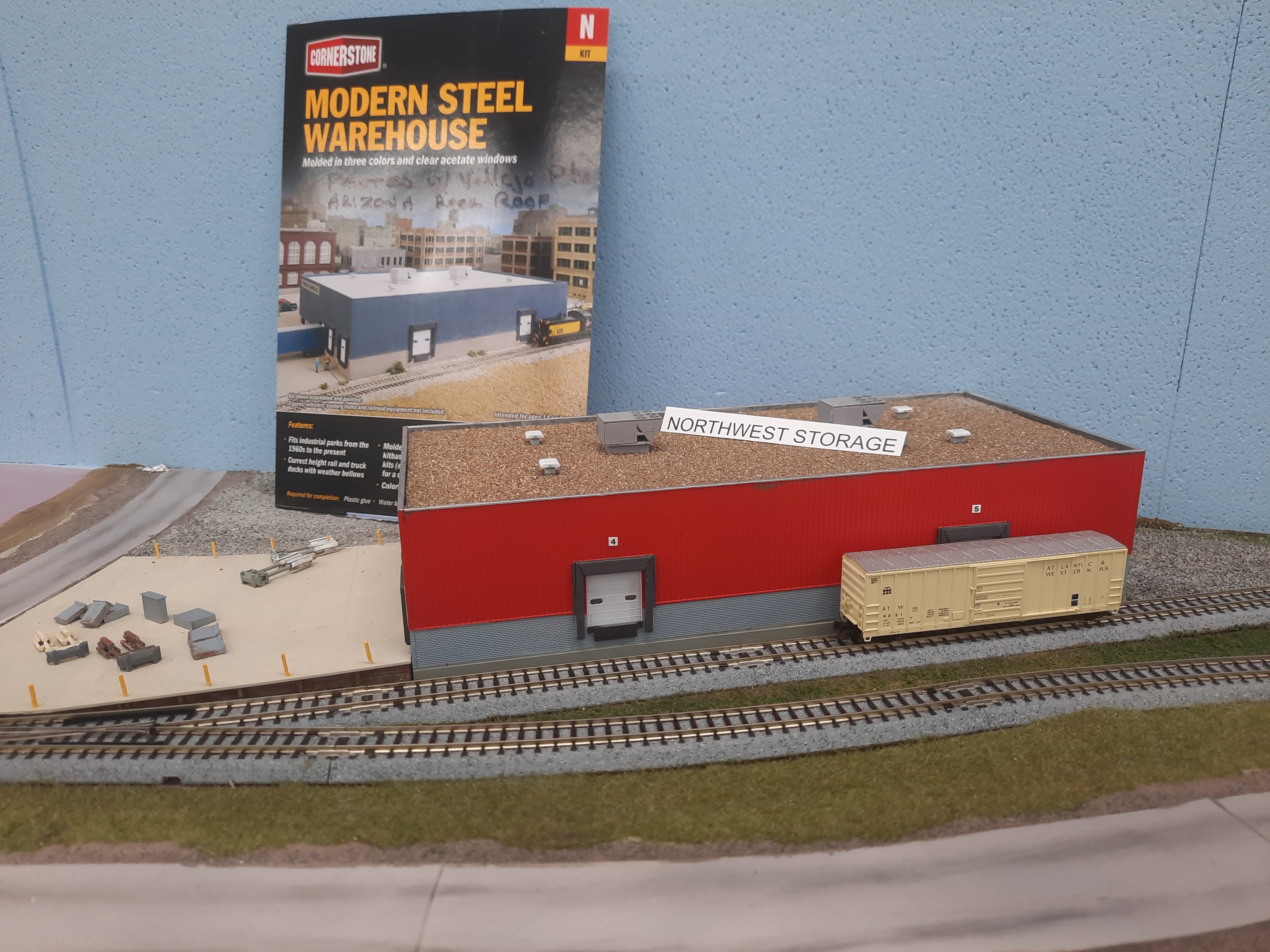
3.3 Setting Realistic Goals
As you plan your customization project, set realistic goals that align with your skill level, available time, and resources. It's tempting to aim for intricate details and extensive modifications, but a well-executed project with achievable goals often yields more satisfaction than a rushed or overly ambitious endeavor.
Considerations for Goal Setting:
- Time Management: Assess the time you can realistically dedicate to your project. This helps in breaking down the customization process into manageable steps.
- Skill Level: Be honest about your skill level. While customization is an opportunity to learn and grow, starting with simpler modifications and gradually advancing will build confidence.
- Budget: Consider the financial aspect of your project. Setting a budget for materials and tools helps in avoiding overspending and allows for better planning.
Planning is the backbone of any successful customization project in model railroading. The time invested in research, sketching, and goal setting not only streamlines the hands-on work but also enhances the overall satisfaction of bringing your creative vision to life. In Part 4, we'll delve into the basic customization techniques you can employ to turn your well-thought-out plans into reality.
Part 4: Basic Customization Techniques for Model Railroading
With a well-defined plan in place, it's time to dive into the hands-on aspect of your model railroading customization project. Part 4 will introduce you to some fundamental customization techniques that will bring your sketched ideas to life.
4.1 Painting and Weathering
4.1.1 Color Mixing and Matching
Choosing the right colors is crucial for achieving realism in your models. Experiment with color mixing or select paints that closely match the prototype you're replicating. Consider the era and locale of your model to capture the appropriate color schemes.
4.1.2 Airbrushing Techniques
Airbrushing provides a smooth and even application of paint. Learn the basics of airbrush control, thinning paints, and masking techniques to create gradients and subtle color transitions.
4.1.3 Hand-Painting Details
For smaller details and fine lines, hand-painting is essential. Invest in high-quality brushes, and practice steady strokes to add intricate details to your structures, vehicles, and figures.
4.1.4 Weathering for Realism
Weathering is a key technique to add authenticity to your models. Experiment with washes, dry brushing, and powders to simulate the effects of time, wear, and environmental conditions.
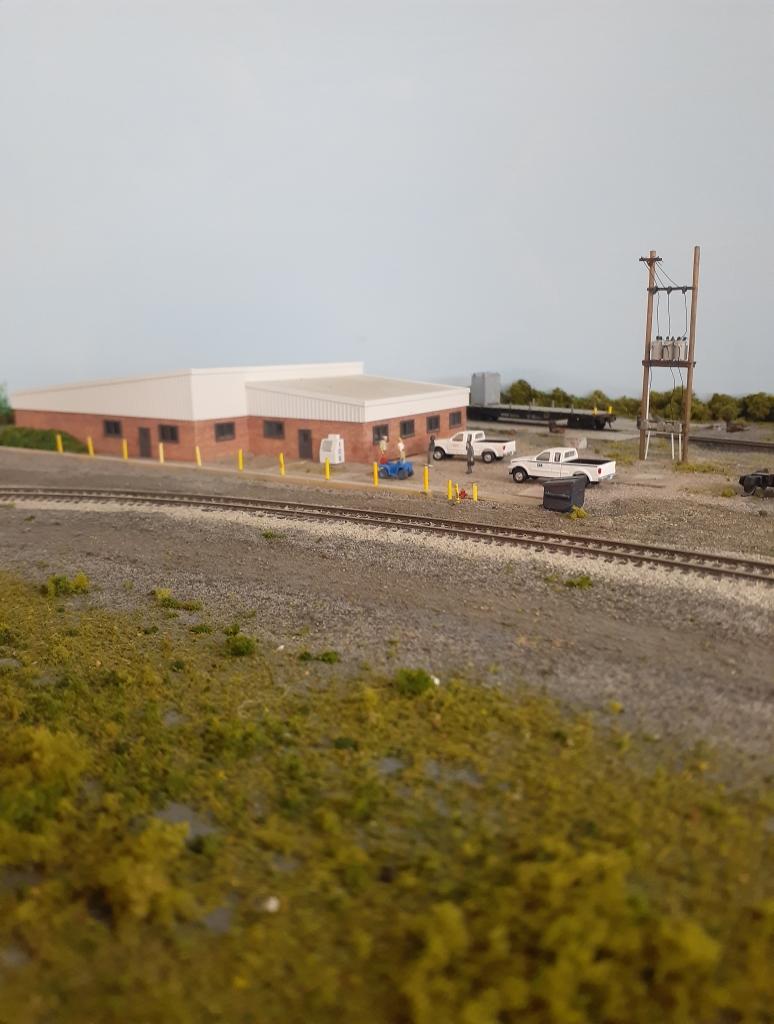
4.2 Detailing with Aftermarket Parts
4.2.1 Exploring Aftermarket Accessories
Aftermarket parts, such as photo-etched details and resin castings, offer a wide range of accessories to enhance your models. These can include window frames, doors, and various intricate elements that may not be present in standard kits.
4.2.2 Applying Decals
Decals are an effective way to add logos, signs, and other markings to your models. Learn the proper application techniques, including the use of setting solutions to ensure a seamless and realistic appearance.
4.2.3 Scratch-Building Basics
Scratch-building involves creating components entirely from raw materials. Start with simple projects, like fences or small structures, to build your skills before tackling more complex scratch-built elements.
These basic customization techniques serve as the foundation for elevating your model railroading layout to new heights. As you become more comfortable with these techniques, you'll gain the confidence to explore advanced customization and kitbashing in Part 5. Stay tuned for an in-depth exploration of combining components and taking your model railroading skills to the next level.
As we conclude our exploration of basic customization techniques in model railroading, it's clear that this hobby is not merely about assembling kits; it's an art form that invites enthusiasts to express their creativity and attention to detail. Through careful planning, research, and the application of fundamental techniques, your model railroad layout can transform from a standardized scene to a unique and captivating masterpiece.
From the meticulous process of color mixing and airbrushing to the intricate art of hand-painting and weathering, each technique plays a crucial role in bringing realism to your models. Detailing with aftermarket parts introduces a world of possibilities, allowing you to enhance your structures with precision-crafted accessories and decals that add the finishing touches.
As you progress through these basic customization techniques, remember that mastery comes with practice. Embrace the learning curve, and don't shy away from experimentation. The essence of model railroading lies not just in the destination but in the journey of refining your skills, overcoming challenges, and continually evolving your layout.
*Photos: First three photos are taken of the Midwest Model Railroad in store N scale layout. The fourth photo is taken of employee Jon Percy's in home N scale layout.
Recent Posts
-
All Aboard the Wisdom Express: Life Lessons from Model Railroading
Embarking on the journey of model railroading opens the door to a world where imagination meets prec
-
Capturing History in Miniature: The Art of Prototype Modeling in the Model Railroad World
Prototype modeling in the model railroad world involves creating miniature replicas of real-life tra
-
Unveiling the Imaginative World of Fictional Railroads: Where Creativity Meets the Rails
Model railroading has long been a hobby rooted in historical accuracy and meticulous attention to de


